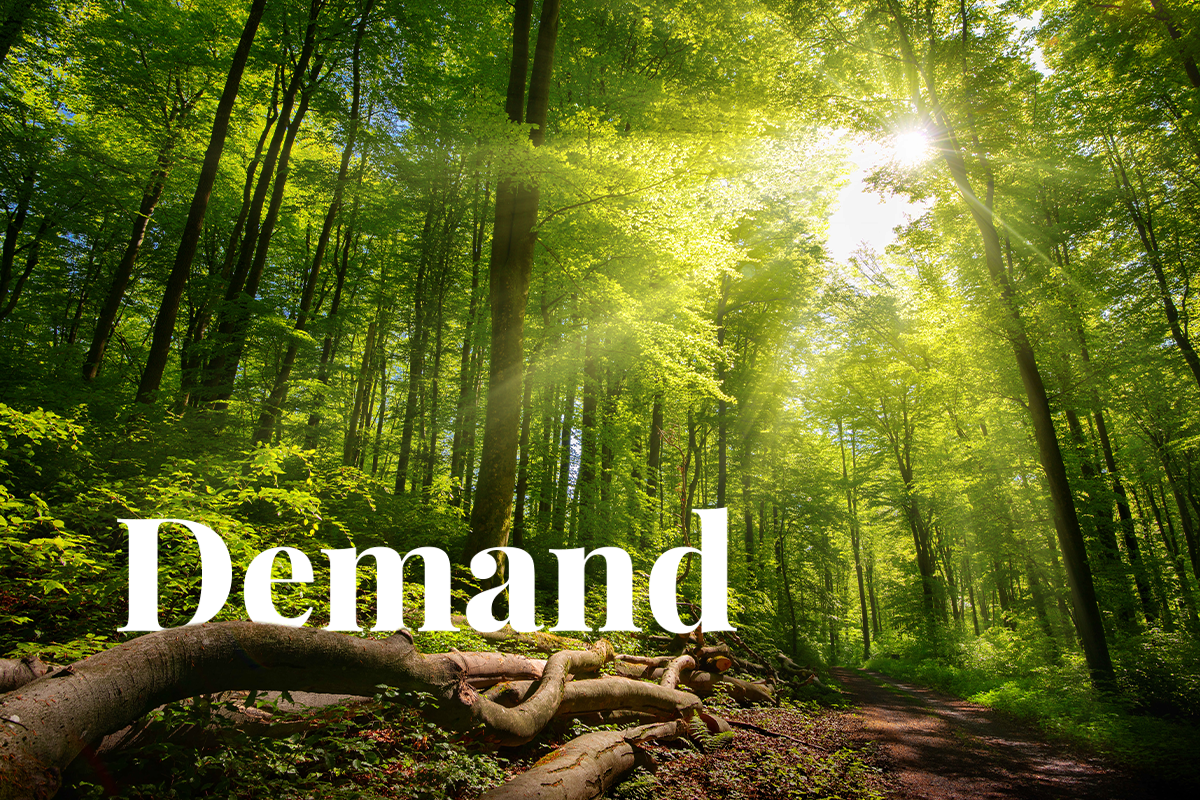The concept of forest carbon credits gained significant attention in recent years as a way to offset carbon emissions and secure the path toward net zero for many companies around the globe. This led to the creation of forest carbon credit markets, which are profoundly impacting the global wood market. In this article, we'll explore how the demand for forest carbon credits is shaping wood markets, driving demand for sustainably harvested wood products, and increasing the value of standing timber.

The role of forests in carbon sequestration
Forests are one of the most important tools we have to reach our collective goal of net zero. Trees absorb carbon dioxide from the atmosphere during photosynthesis and store it in their trunks, branches, and leaves. Forests are estimated to absorb up to 30% of the carbon dioxide released by human activity each year, making them a critical carbon sink.
Read more: Breathe easy: How trees are nature's air-cleaning machines
However, the role of forests in carbon sequestration is threatened by deforestation and forest degradation. These activities release carbon stored in trees and soil, contributing to greenhouse gas emissions. Sustainable forest management practices, such as reducing deforestation and forest degradation, planting new trees, and conserving existing forests, are essential for maintaining the role of forests as carbon sinks.
Forest carbon credit markets
Forest carbon credits are a way for landowners to earn money by sequestering carbon in their forests. Landowners who implement sustainable forest management practices can earn credits for the carbon sequestered in their forests. These credits can then be sold on carbon markets to corporations and governments looking to offset their carbon emissions.
Read more: Carbon farming: How it's good for the environment, farmers, and biodiversity?
The growth of forest carbon credit markets has been driven by the increasing demand for carbon offsets from corporations and governments committed to reducing their carbon footprint. In 2022, the voluntary carbon market’s traded value was worth a whopping $978.56 billion, with forest carbon credits accounting for a significant portion thereof.
The impact of carbon credits on wood markets
The demand for forest carbon credits is having a significant impact on the wood market. Landowners who want to earn carbon credits must demonstrate that their forests are being managed sustainably, which is driving demand for sustainably harvested wood products. This demand has increased interest in certification programmes like the Forest Stewardship Council (FSC) and the Programme for the Endorsement of Forest Certification (PEFC).
Certification programmes like the FSC and PEFC allow consumers to identify sustainably harvested wood products. These programmes set standards for responsible forest management, including requirements for protecting biodiversity, maintaining forest health, and respecting the rights of indigenous peoples and local communities. By purchasing FSC- or PEFC-certified products, consumers can support sustainable forest management practices and contribute to carbon sequestration in forests.
In addition to driving demand for sustainably harvested wood products, the demand for forest carbon credits is also shaping the wood market by increasing the value of standing timber. This is because carbon credits are often sold on a per-tonne basis, which means that the value of a forest's carbon sequestration potential is directly tied to the amount of standing timber. As a result, landowners have an incentive to maintain healthy, productive forests that can sequester more carbon and generate more revenue from carbon credits. A recent report on the topic explores this dynamic in detail.

Read more: The roots of a sustainable future: integrating trees into a circular economy
Challenges and criticisms
While forest carbon credit markets drive sustainable forest management practices forward and promote carbon sequestration in forests, they are not without their challenges and criticisms. One of the main concerns is the potential for greenwashing, where corporations and governments purchase carbon credits without making significant efforts to reduce their carbon footprint. This could result in the demand for carbon credits outstripping the supply of sustainably managed forests, leading to the displacement of indigenous communities and other negative environmental impacts.
Another challenge with forest carbon credit markets is ensuring that the credits accurately measure the carbon sequestration potential of forests. This requires accurate and reliable methods for measuring carbon sequestration. This is why it is significant that as the market matures, more complex and accurate monitoring systems are put in place to ensure the reliability of the credits.
Read more: Biodiversity credits: an innovative financing mechanism for conservation
DGB Group’s position: Carbon credits are the solution for a net-zero future
The demand for forest carbon credits is shaping wood markets in several ways, driving demand for sustainably harvested wood products and increasing the value of standing timber. By promoting sustainable forest management practices, carbon credit markets are helping to protect forests and support their role as vital carbon sinks. While there are also challenges that need to be addressed, carbon credit markets are successful in effecting long-lasting change for the better. Overall, the growth of forest carbon credit markets is a positive development for the wood market and the planet, providing a viable path towards a net-zero future while promoting sustainable forestry practices.
DGB Group’s large-scale afforestation and reforestation projects support the movement of carbon farming, providing the landowners with value in exchange for keeping their forests healthy and managed sustainably.
You can be part of this change too—contact our experts




